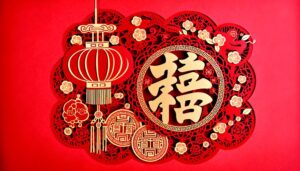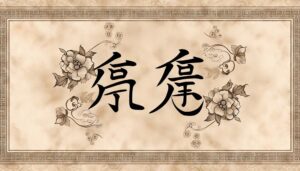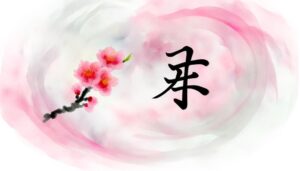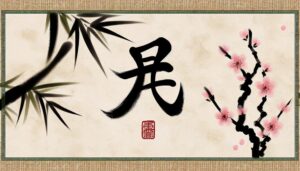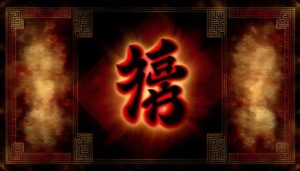How to Draw Chinese Symbols for Music and Medicine
The Chinese symbol for music, 音乐 (yīnyuè), and medicine, 医学 (yīxué), reflect ancient Chinese civilization's values of harmony and well-being. Rooted in Zhou Dynasty traditions, these symbols are integral to Confucian and Daoist thought, promoting societal balance and individual health.
Music, represented by characters for sound and joy, was key in rituals and emotional expression. Medicine, combining characters for healing and learning, encompassed practices like herbal remedies and acupuncture.
These symbols illustrate a sophisticated philosophy where art and science intertwine, offering profound insights into traditional Chinese life. Explore further to uncover the rich cultural layers behind these symbols.
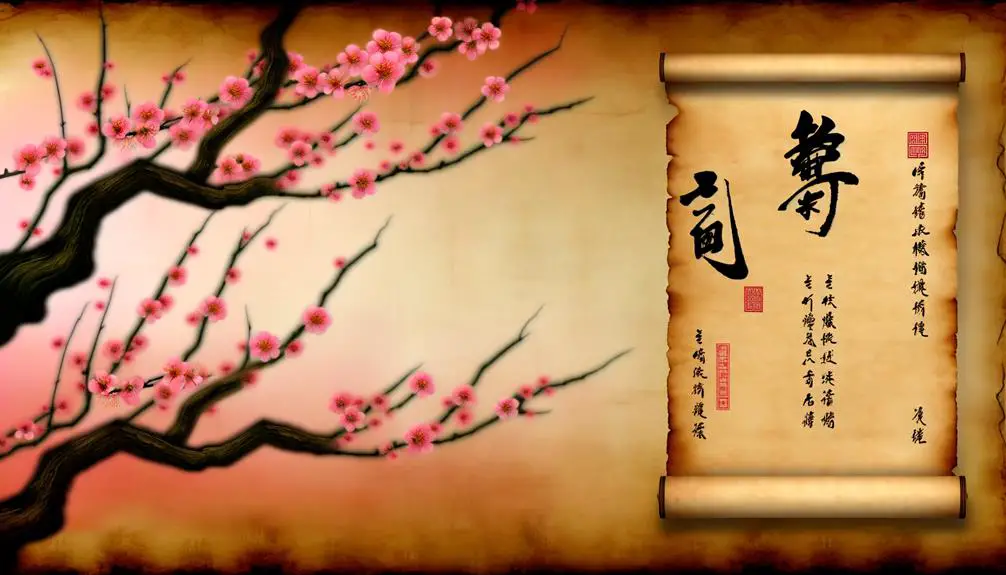
Key Takeaways
- The traditional Chinese character for music is 乐 (yuè).
- The traditional Chinese character for medicine is 药 (yào).
- Both characters emphasize harmony and healing in traditional Chinese culture.
- Symbolically, music (乐) and medicine (药) are interconnected in promoting well-being.
- The characters reflect ancient principles in Confucian and Daoist philosophies.
Historical Origins
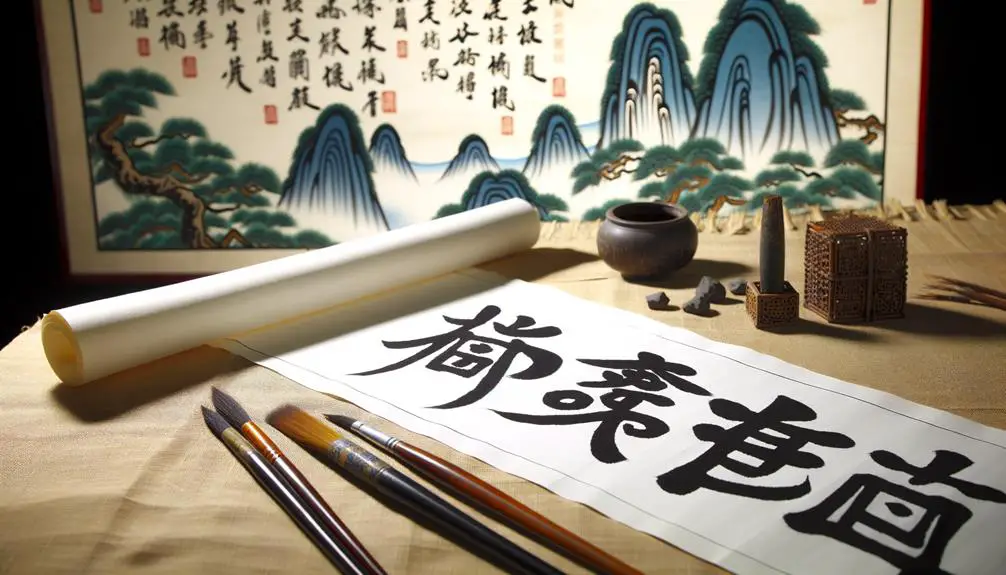
The historical origins of the Chinese symbols for music (音乐, yīnyuè) and medicine (医药, yīyào) can be traced back to ancient Chinese civilization, where both concepts were deeply intertwined with cultural and philosophical beliefs.
During the Zhou Dynasty (1046–256 BCE), music and medicine were perceived as essential elements of societal harmony and individual well-being. Classic texts such as the 'Liji' (Book of Rites) document the role of music in maintaining moral order, while the 'Huangdi Neijing' (Yellow Emperor's Inner Canon) illustrates the foundational principles of Chinese medicine.
These symbols emerged from a lexicon that emphasized holistic health, reflecting the enduring interplay between auditory and medicinal therapies in promoting equilibrium and strength in life.
Cultural Significance
Rooted in millennia of tradition, the cultural significance of the Chinese symbols for music (音乐, yīnyuè) and medicine (医药, yīyào) reflects their profound impact on Chinese society, philosophy, and daily life. These symbols encapsulate the essence of ancient Chinese wisdom, where harmony and health are intertwined.
Music and medicine are not merely practices but are deeply integrated into the cultural fabric, influencing rituals, education, and governance.
- Historical depth: Embedded in Confucian and Daoist thought.
- Philosophical integration: Harmony in music parallels balance in medicine.
- Social rituals: Central to life events and ceremonies.
- Educational relevance: Integral to traditional Chinese learning.
- Governmental roles: Historically guided policies and health practices.
Understanding these symbols offers insight into the holistic worldview of Chinese culture.
Symbolic Meanings
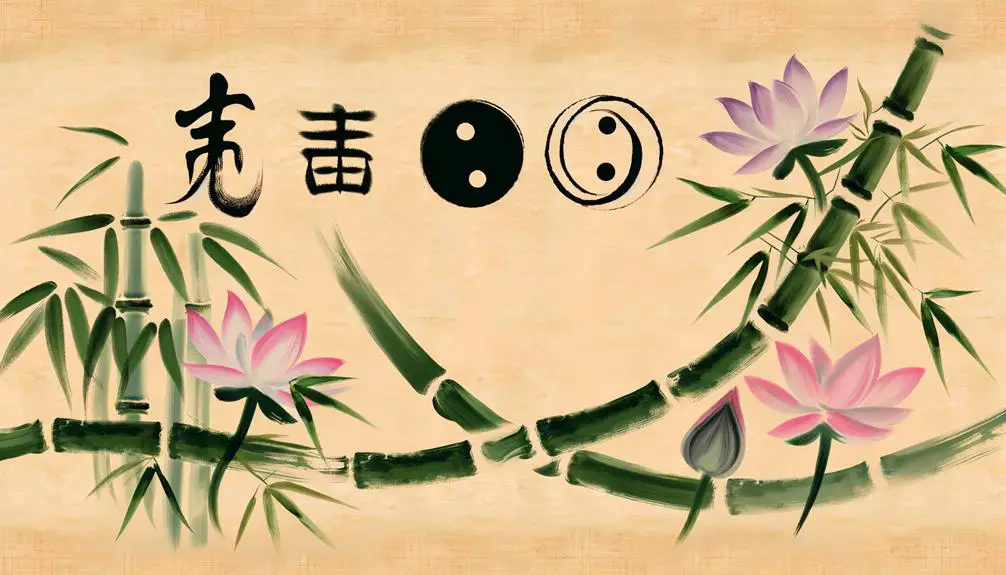
The symbolic meanings of the Chinese character for music and medicine reveal deep cultural intersections and historical nuances. Rooted in ancient Chinese philosophy, these symbols reflect a holistic understanding of harmony and well-being.
Examining their historical context provides insights into how these interconnected concepts have evolved and influenced Chinese cultural practices over centuries.
Cultural Significance Explained
Intriguingly, the Chinese symbols for music (音乐) and medicine (医) intertwine through historical contexts, reflecting deep-seated cultural values and philosophical beliefs. The symbolic meanings embedded in these characters illuminate their shared roles in achieving harmony and well-being within society.
- Holistic Health: Both music and medicine are seen as essential to maintaining physical and spiritual balance.
- Confucian Ideals: They embody Confucian principles, emphasizing moral integrity and societal harmony.
- Daoist Philosophy: Highlighting the interconnectedness of all things, where music and medicine nurture life force (Qi).
- Cultural Rituals: Used in ancient rituals to restore order and health.
- Literary References: Frequently mentioned in classical texts, underscoring their importance in daily and scholarly life.
This interconnectedness underscores a worldview where art and healing are symbiotic.
Historical Context Overview
Ancient Chinese civilization imbued the symbols for music and medicine with profound meanings, reflecting a sophisticated understanding of their roles in promoting societal harmony and individual well-being.
Historically, music (音, yīn) was revered for its capacity to cultivate moral virtues and regulate emotions. Confucian philosophy emphasized its importance in governance and education, seeing it as a conduit for cosmic order.
Similarly, medicine (醫, yī) was more than a healing practice; it symbolized the balance of bodily energies and the principles of Yin and Yang. Rooted in Daoist beliefs, it aimed to harmonize the individual with the natural world.
These symbols, deeply interwoven with cultural and philosophical traditions, underscore the intrinsic connection between health, music, and the broader cosmos.
Philosophical Foundations
Exploring the philosophical foundations of Chinese symbols for music and medicine reveals a profound interconnectedness rooted in Daoist and Confucian thought. Both traditions emphasize harmony and balance, principles evident in the ideograms representing these concepts.
In Daoism, music is seen as a reflection of the natural order, essential for maintaining cosmic equilibrium.
Confucianism, meanwhile, posits that music and medicine are essential for societal well-being and moral cultivation.
- Harmony and Balance: Central tenets in both Daoist and Confucian philosophies.
- Natural Order: Music as an expression of the Dao, or the way of nature.
- Moral Cultivation: Music and medicine as means to refine character.
- Societal Well-being: Integral to a harmonious society.
- Cosmic Equilibrium: Both disciplines contribute to universal harmony.
Music in Ancient China
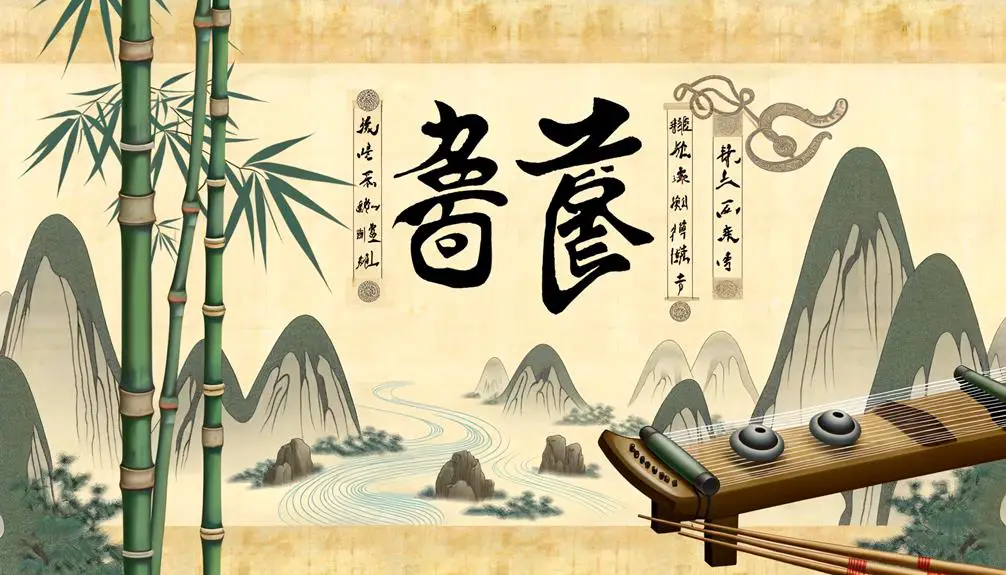
Music in ancient China was intricately woven into the fabric of societal and spiritual life, encompassing traditional musical instruments like the guqin and the pipa. It played a pivotal role in rituals, from court ceremonies to ancestral worship, reinforcing societal hierarchies and cosmic order.
Philosophically, music was considered a reflection of harmony within the universe, embodying the principles of Confucianism and Daoism.
Traditional Musical Instruments
How did the intricate craftsmanship and cultural significance of traditional musical instruments shape the sonic landscape of ancient China?
The meticulous creation and profound cultural symbolism of these instruments played a pivotal role in defining the auditory aesthetics of ancient Chinese society. Each instrument was not merely a tool for music but a vessel of historical narratives and philosophical ideals.
- Guqin: A seven-stringed zither symbolizing intellectual refinement and moral integrity.
- Pipa: A four-stringed lute associated with elegance and storytelling.
- Erhu: A two-stringed fiddle representing emotional depth and lyrical expression.
- Dizi: A bamboo flute embodying simplicity and natural harmony.
- Sheng: A mouth-blown free reed instrument illustrating musical versatility and innovation.
These instruments collectively enriched the cultural tapestry, offering a nuanced understanding of ancient Chinese civilization.
Role in Rituals
In ancient China, music was integral to rituals, serving as both a spiritual conduit and a means of reinforcing social hierarchies. Ritual music, often performed during state ceremonies, ancestral worship, and seasonal festivals, was meticulously structured to align with cosmological beliefs and Confucian principles.
Instruments such as the guqin and bells (bianzhong) were chosen for their symbolic resonance and their capacity to harmonize human activity with the natural and celestial orders. This ritualistic music aimed to cultivate moral virtue, promote social cohesion, and communicate with deities and ancestors.
The highly formalized nature of these performances underscored the importance of music in maintaining the social order, reflecting the profoundly intertwined relationship between music, governance, and spirituality in ancient Chinese culture.
Philosophical Significance
The philosophical significance of music in ancient China is deeply embedded in the principles of Confucianism and Daoism, reflecting its role as a medium for ethical cultivation and cosmic harmony. Confucius emphasized music's capacity to mold character, promote social order, and reflect the moral universe. Daoist thought accentuated music's ability to align human actions with the natural order, fostering inner peace and universal balance.
Key aspects include:
- Ethical cultivation: Music as a tool for moral and personal development.
- Social harmony: Promoting societal stability and collective well-being.
- Cosmic resonance: Connecting human actions with the cosmos.
- Ritual significance: Integral to religious and state ceremonies.
- Emotional expression: Channeling and harmonizing human emotions.
Understanding these elements elucidates music's profound cultural and philosophical roles in ancient Chinese society.
Medicine in Ancient China
Ancient China's medical practices, deeply intertwined with its philosophical and cultural paradigms, laid the foundation for traditional Chinese medicine that continues to influence modern holistic approaches.
The ancient texts, such as the Huangdi Neijing (The Yellow Emperor's Inner Canon), offer profound insights into the body's intricate balance of Yin and Yang and the essential energy, Qi.
Physicians of the era employed an array of techniques including acupuncture, herbal medicine, and moxibustion, predicated on restoring harmony within the body.
The concept of the Five Elements—Wood, Fire, Earth, Metal, and Water—further contextualized the interdependencies of physiological and pathological phenomena.
These principles underscore a holistic worldview, emphasizing prevention and the symbiotic relationship between human beings and their environment.
Integration of Music and Medicine
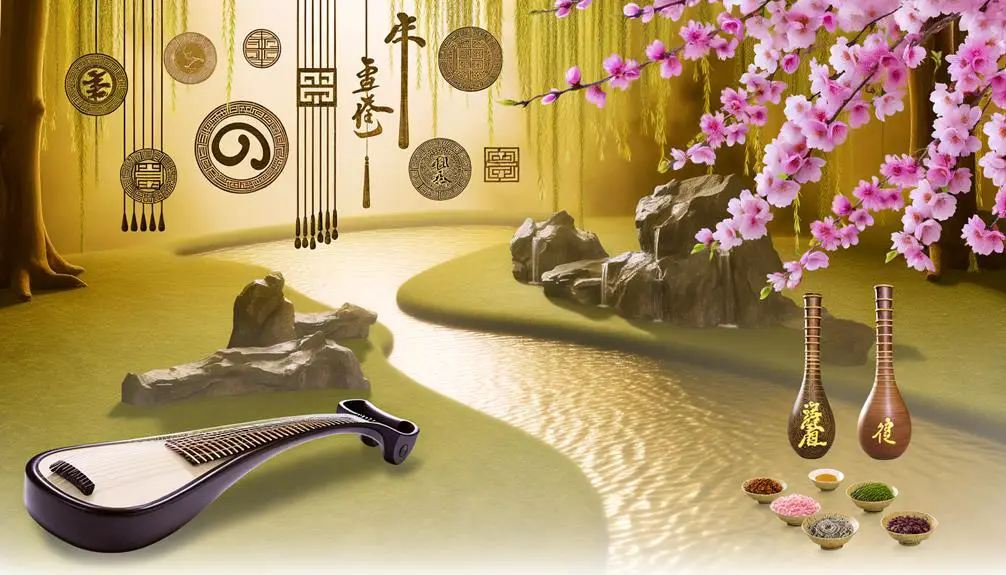
Exploring the intersection of music and medicine reveals a rich tapestry where therapeutic practices resonate with cultural and historical significance. Traditional Chinese medicine has long embraced music as a means to restore harmony within the body, reflecting the philosophy of balance fundamental to Chinese culture.
Historically, music has been utilized to alleviate mental stress, enhance emotional well-being, and support physical healing.
Key aspects include:
- Historical Usage: Ancient texts document music's role in medical treatments.
- Cultural Practices: Music therapy aligns with traditional rituals and philosophies.
- Scientific Studies: Modern research validates music's physiological and psychological benefits.
- Holistic Approach: Integration supports all-encompassing health strategies.
- Therapeutic Modalities: Diverse forms of music therapy cater to various ailments.
Understanding this synergy enriches the appreciation of music's profound impact on health.
Symbolism in Modern Times
In contemporary society, the symbolism of music and medicine in Chinese culture continues to evolve, reflecting both historical legacies and modern interpretations.
The traditional Chinese character for music (樂, yuè) and its connection to medicine (醫, yī) remains a powerful emblem of harmony and healing. Modern practitioners and scholars increasingly explore this integration through a lens of cultural revival and innovation.
Music therapy, for instance, is gaining traction within both clinical and holistic medical frameworks, reaffirming ancient beliefs in its therapeutic efficacy. Additionally, contemporary Chinese medicine incorporates musical elements to enhance patient well-being, blending ancient wisdom with cutting-edge techniques.
This enduring symbolism underscores a deep-rooted cultural appreciation for the interconnectedness of art, health, and holistic wellness.
Healing Practices
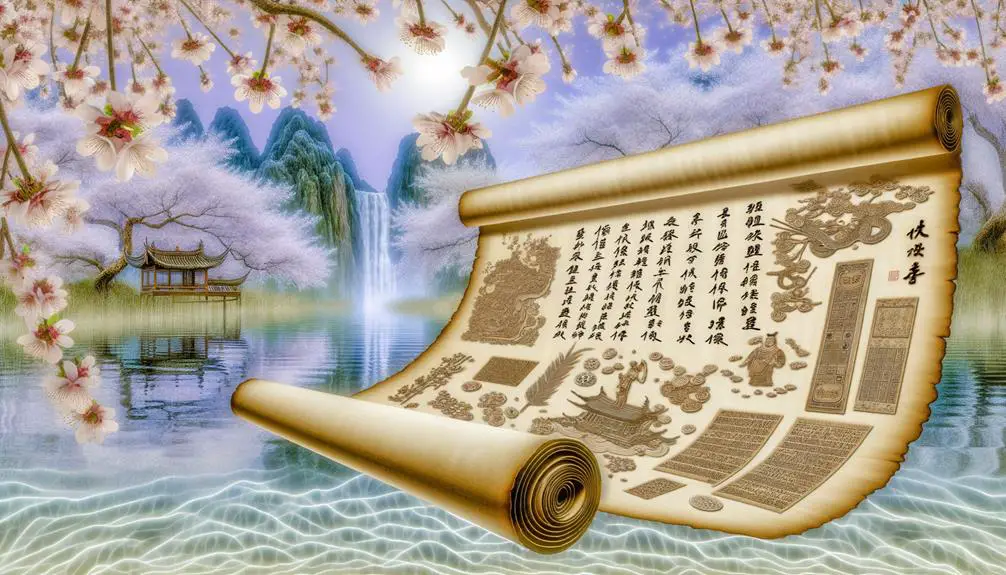
Traditional Chinese medicine (TCM) has long integrated the therapeutic potential of music with its holistic approach to health. Historical texts reveal that music was not merely an art form but also an essential element in various healing practices, believed to balance the body's essential energies.
This intersection of music and medicine continues to influence contemporary therapies, reflecting a rich cultural heritage that values the interconnectedness of physical, emotional, and spiritual well-being.
Traditional Chinese Remedies
Rooted in centuries of empirical knowledge and philosophical underpinnings, Chinese healing practices encompass a diverse array of remedies that integrate herbal medicine, acupuncture, and Qigong. These traditional remedies are not merely anecdotal but are embedded in a rich tapestry of historical context and cultural nuance.
The following elements are central to Traditional Chinese Medicine (TCM):
- Herbal Medicine: Utilizes a vast compendium of natural substances.
- Acupuncture: Involves the insertion of fine needles at strategic points.
- Qigong: Combines movement, meditation, and controlled breathing.
- Cupping Therapy: Uses heated cups to create suction on the skin.
- Moxibustion: Involves burning moxa (a type of dried mugwort) near the skin.
These practices collectively aim to restore balance and harmony within the body.
Music as Therapy
Expanding beyond the physical interventions of Traditional Chinese Medicine, the domain of auditory healing through music offers a complementary pathway to achieving holistic well-being. Historically, Chinese culture has revered music not only as an art form but as a potent therapeutic tool.
The ancient Chinese believed that music could harmonize the body, mind, and spirit, aligning with the principles of yin and yang. Contemporary studies corroborate these ancient insights, illustrating music's efficacy in reducing stress, alleviating pain, and improving emotional health.
Instruments like the guqin and pipa were traditionally employed for their soothing effects. Today, the integration of music therapy within healthcare systems globally underscores its enduring relevance, bridging ancient wisdom with modern practice.
Traditional Instruments
The rich tapestry of Chinese culture is vividly illustrated through its traditional instruments, each embodying historical significance and unique musical heritage. These instruments have been meticulously crafted over centuries, reflecting regional diversity and the evolution of musical expression.
Their resonant sounds have accompanied rituals, celebrations, and daily life, offering a window into the profound cultural ethos of China.
- Guqin: A seven-stringed zither, central to Confucian scholars and revered for its meditative sounds.
- Erhu: A two-stringed bowed instrument, known for its expressive, melancholic tones.
- Pipa: A four-stringed lute, rich in historical narratives and poetic imagery.
- Dizi: A bamboo flute, celebrated for its bright, airy timbre.
- Sheng: A mouth-blown free reed instrument, essential in traditional Chinese orchestras.
These instruments encapsulate the essence of Chinese musical traditions.
Herbal Remedies
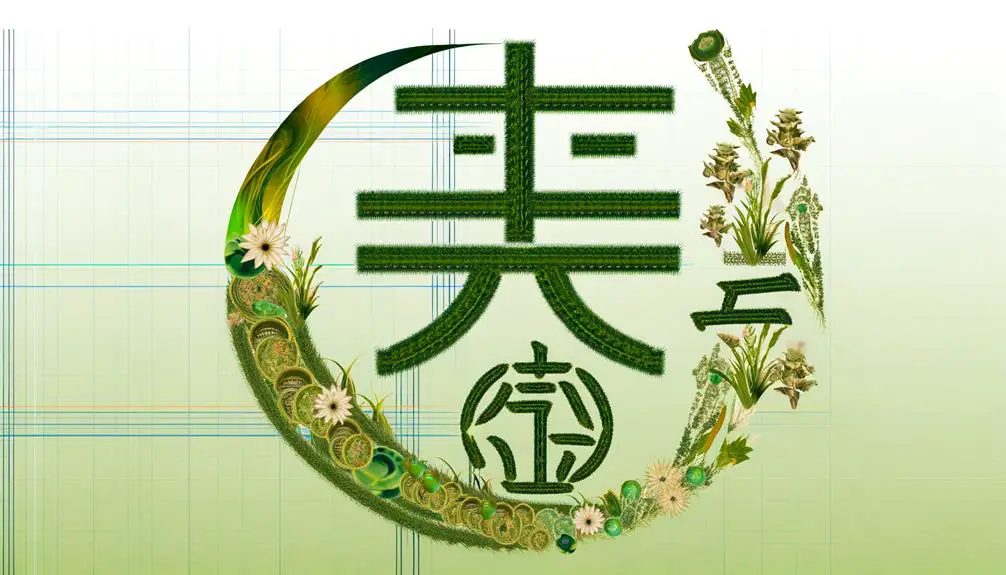
Herbal remedies in Chinese medicine, deeply intertwined with the philosophy of balance and harmony, represent a millennia-old tradition of utilizing natural resources to promote health and well-being.
The practice, rooted in ancient texts like the 'Huangdi Neijing' (The Yellow Emperor's Inner Canon), emphasizes the synergistic use of herbs to restore equilibrium within the body.
Each herb is meticulously categorized according to its nature (cold, hot, warm, cool) and flavor (bitter, sweet, sour, pungent, salty), reflecting a profound understanding of their therapeutic properties.
Historical texts and empirical knowledge passed down through generations underscore the cultural and medicinal significance of these remedies, which remain foundational to Chinese medical practice.
This rich heritage underscores the holistic approach central to Traditional Chinese Medicine (TCM).
Contemporary Applications
Modern integration of traditional Chinese herbal remedies into contemporary medical practices exemplifies the enduring relevance and adaptability of ancient wisdom in addressing today's health challenges. This synthesis fosters a holistic approach, bridging millennia of Chinese medical heritage with cutting-edge scientific research.
The dynamic interplay between tradition and innovation highlights the potential of ancient methodologies to enhance modern healthcare.
- Research Collaboration: Joint studies between Eastern and Western medical institutions.
- Pharmaceutical Development: Extraction and refinement of bioactive compounds from traditional herbs.
- Clinical Trials: Rigorous testing of traditional remedies for efficacy and safety.
- Education Programs: Incorporation of traditional Chinese medicine in medical school curricula.
- Public Health Initiatives: Government-sponsored programs promoting integrative health practices.
This confluence of knowledge underscores the transformative impact of blending traditional and modern medical paradigms.
Conclusion
The Chinese symbols for music and medicine are deeply intertwined with historical origins, cultural significance, and symbolic meanings. Grounded in philosophical foundations, music in ancient China and healing practices reflect a harmonious interplay.
Traditional instruments and herbal remedies reveal a rich tapestry of cultural heritage. Contemporary applications continue to weave these ancient traditions into modern practice, underscoring the enduring relevance of these symbols.
Essentially, music and medicine in Chinese culture epitomize an intricate balance of art and science.


